A virus in my meal?
Could the meat in your plate pose a health risk for you? If the animal where it came from was properly raised and handled, and the meat went through a sanitary inspection before reaching your plate, there is little chance it can cause you a health problem. But, what could happen if a sanitary authority has not inspected it?
Your meat indeed could be a high risk for your health. In some cases this can be a public concern, because meat can be a source of pathogens that could cause a disease outbreak. In fact, it has been documented that close interaction among wildlife, domestic animals, and humans could provide the perfect environment for pathogen exchange.[1] Even more alarmingly, almost 75% of diseases that have recently emerged in humans have their origin in animals, a process technically known as zoonosis.[2] Hunting and butchering of wild animals has been increasingly recognized as a source of disease emergence. The most common zoonotic pathogens are RNA viruses, such as the severe acute respiratory syndrome (SARS) coronavirus,[3] and the H5N1 influenza virus, that causes flu.[4] Wildlife products that have not been inspected for sanitary conditions could thus be a serious threat to public health.
The United States is one of the world’s largest importers of wildlife and wildlife products.[5] Every year approximately 120 million live wild animals and 25,000 tons of wildlife products are imported into the US. New York City is the busiest port of entry into the US, and in combination with the Los Angeles and Miami international airports, accounts for more than 50% of all wildlife imports. One of the main concerns with importation of wild animals and wildlife products is the introduction of pathogens that are associated with them. Examples of diseases introduced to the US by wildlife include amphibian chytridiomycosis, exotic Newcastle’s disease, and monkey pox.
In a study published this month in PLoS ONE, a large collaborative team composed by researchers from EcoHealth Alliance, Columbia University, the American Museum of Natural History, the US Centers for Disease Control and Prevention (CDC), the US Geological Survey, and the Wildlife Conservation Society tested samples from approximately 44 different meat products confiscated at five US international airports, the majority coming from JFK Airport.[6] Using DNA barcoding they identified that the bushmeat (term used to define product obtained from hunting and butchering of wild animals) came from chimpanzees, mangabeys, and green monkeys, among other animals. Both simian foamy viruses (SFV) and herpes viruses were detected in the wildlife products. Both type of viruses have been associated with infections and diseases in humans, such as malignant catarrhal fever or herpes B virus.[7] This is yet another study highlighting the manifold applications of DNA barcoding.
This PLoS ONE study6 was the first to conduct surveillance for zoonotic viruses in bushmeat products illegally imported into the US and establishes a precedent of the threat these products could represent for our public health.
[1] Karesh, W.B., et al. (2005). Wildlife trade and global disease emergence. Emerging Infectious Diseases, Vol. 11, No. 7: 1000-1002.
[2] Cleaveland, S., et al. (2007). Overview of pathogen emergence: Which pathogens emerge, when, and why. Current Topics in Microbiology and Immunology, Vol. 35: 85-111.
[3] Xu, R.H., et al. (2004). Epidemiologic clues to SARS origin in China. Emerging Infectious Diseases, Vol. 10, No. 6: 1030-1037.
[4] Li, K.S., et al. (2004). Genesis of a highly pathogenic and potentially pandemic H5N1 influenza virus in eastern Asia. Nature, Vol. 430, No. 6996: 209–213.
[5] US Fish and Wildlife Service Office of Law Enforcement Intelligence Unit. US wildlife trade: An overview for 1997-2003. Available at: http://www.fws.gov/le/pdffiles/Wildlife%20Trade%20Overview%20Report.pdf
[6] Smith, K.M., et al. (2012). Zoonotic viruses associated with illegal imported wildlife products. PLoS ONE, Vol. 7, Issue 1.
[7] Schrenzel, M.D. (2008). New host for equine herpesvirus 9. Emerging Infectious Diseases, Vol. 14, No. 10: 1616-1619.
| Print article | This entry was posted by Oscar Pineda-Catalan on January 19, 2012 at 5:28 pm, and is filed under DNA Barcoding. Follow any responses to this post through RSS 2.0. You can leave a response or trackback from your own site. |
No comments yet.
No trackbacks yet.

Jumping Down the Road to Cancer.
about 13 years ago - No comments
Lying dormant in our genomes are millions of jumping genes. Originally discovered by Barbara McClintock, transposons are DNA sequences that can move from one location to another in our DNA. Transposons cause mutations when they jump to new locations, so keeping them from jumping is important. However, although transposons are largely silent, every person probably…

When is a clone not a clone? When it’s a mosaic.
about 13 years ago - No comments
For the last decade or so, progressive cancer treatments involved taking samples of tumors, testing the cells to determine the genetic makeup, and then prescribing medicines targeted to specific mutations. There are many benefits to this approach, but it doesn’t always work. It turns out that tumors aren’t uniform; they are mosaics of cells that…
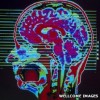
Jumping genes in your brain?
about 13 years ago - No comments
Mobile chunks of DNA that walk their way from one position in the genome to another may affect neurological diseases and could have subtle influences on normal brain function and behavior, according to a recent study in Nature. Alu is an example of a so-called “jumping gene” – a transposable DNA sequence that “reproduces” by…
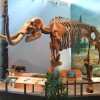
DNA sequencing helps discover cavemen’s tools and diet
about 13 years ago - No comments
In the 1970s a team of archaeologists led by Carl Gustafson unearthed the remains of a single, 3-ton, male mastodon (Mammut americanum, a close relative of mammoths and elephants), hunted and butchered by a group of men at the Manis site in the state of Washington, USA (Gustafson 1979). Among the mastodon remains they found…

Evolution – Got Milk?
about 13 years ago - No comments
After asking students during a lesson on mutations if it is possible that a mutation in DNA could be good, most students will nod yes without much understanding. Recently, I finally had one student raise his hand immediately and answer the question (with extreme surprise that no other students were blurting out the answer)…”evolution!” He…
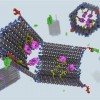
What do you get when you cross an immunologist, a nanotechnologist, and a geneticist? A DNA nano-robot!
about 13 years ago - No comments
Welcome to the world of nanobiotechnology and translational research… In a brilliant example of multidisciplinary research, Harvard Medical School’s Shawn Douglas, Ido Bachelet, and George Church combined forces to build nanostructures that would mimic the body’s immune system to recognize cancer cells and trick them into self-destructing. Their research is published today in Science but…
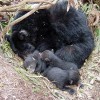
Hibernation – Why Not Me?
about 13 years ago - No comments
It’s the season of hibernation, something I’ve always wished I could do. Oh, to wrap up in a ball, sleep away the winter, and wake to a beautiful spring day – like Bambi! Although the thought has always intrigued me, it never really occurred to me what a feat hibernation actually is. It turns out…
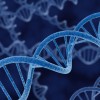
Controlling gene expression through diet
about 13 years ago - No comments
Epigenetics is the study of chemical reactions that control the on and off switch of genes at specific times and the factors influencing them. Environment is a factor that influences epigenetic change which may encompass behavior, stress or diet. The easiest of the three to make observations from is diet. When we think of food,…
DNA in a cup of water
about 13 years ago - No comments
In the movie, “Signs”, one of the characters, Bo, has an interesting habit of leaving half-full glasses of water lying around the house. To Bo, the water “tastes funny” after she drinks only a few sips of it. This odd habit becomes instrumental in the story’s ending. (I will not spoil it for those of you…
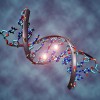
Tag…You’re It!
about 13 years ago - 1 comment
Classic genetics alone is unable to explain the diversity we see within a population of living things. This also cannot explain how identical twins with the same DNA sequences can have differences in their traits and development of disease. First introduced in 1939 by C.H. Waddington, epigenetics is now able to offer some explanation, as…
